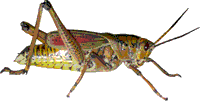Entomology Collections, General

Entomology Papers from Other Sources
Document Type
Article
Date of this Version
1988
Abstract
Overwintering larvae of Colletes kincaidii Cockerell were obtained by removing soil blocks from a large nesting site established in a hardened, vertical sandstone cliff at Bonny Doon, Calif. One sandstone block was placed in a greenhouse at Logan, Utah, where two emerging females established nests within glass tubes inserted into observation boxes and one female excavated a nest in soil beneath the sandstone block from which she emerged. Observations of nesting biology in glass tube nests showed for the first time that polyester cell linings are composed of a mixture of salivary and Dufour's gland materials. Salivary secretion is first brushed onto nest walls with the glossa; Dufour's gland liquid is deposited on top of the salivary layer and brushed into a thin cover layer with the bifid glossa. The careful sequence of glandular deposition, combined with physical evidence obtained during observations, suggests that salivary gland material may carry an enzyme that links lactones derived from the Dufour's gland into polyester chains that are incorporated into cell linings. Cell platform construction and how this platform is used to position the female during the act of egg deposition are described. The physical restructuring of the platform into a cell cap immediately after the egg is deposited is also described. Cell provisioning and methods used to deposit the egg are described in detail. Late embryogenesis and immature development were observed in the laboratory using in vivo and in vitro methods. These observations confirm the 1800 rotation of the embryo, eclosion from the egg chorion as a second instar, anus-to-mouth feeding habits of the larva, and the migration pattern of the larva from its position within the egg to the cup-shaped central position on the surface of the cell provisions. Supportive studies in the field confirmed that some females in a nesting population excavate their entire burrow system while others use abandoned nests and extend lateral burrows before constructing cell series in these new excavations; some females use abandoned nests to construct cell series only within the residue cell linings produced by previous generations. These studies also confirmed that anyone cell of C. kincaidii is provisioned with only one pollen host species, but any number of pollen host species can be used by the same individual, different individuals, or populations that are distributed across North America; and that Epeolus compactus Cresson and Paravilla fumosa Hall were found parasitizing C. kincaidii. Much of the new information is used as a first step in establishing the evolutionary status of Colletidae.


Comments
Published in Ann. Entomol. Soc. Am. 81(4): 605-625 (1988).